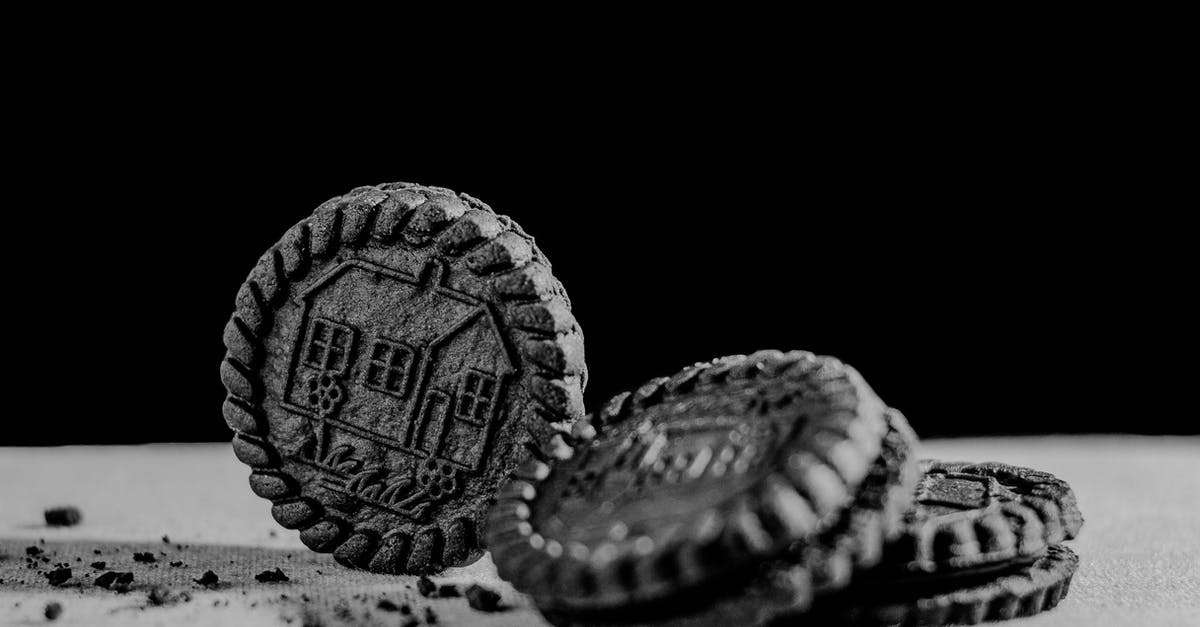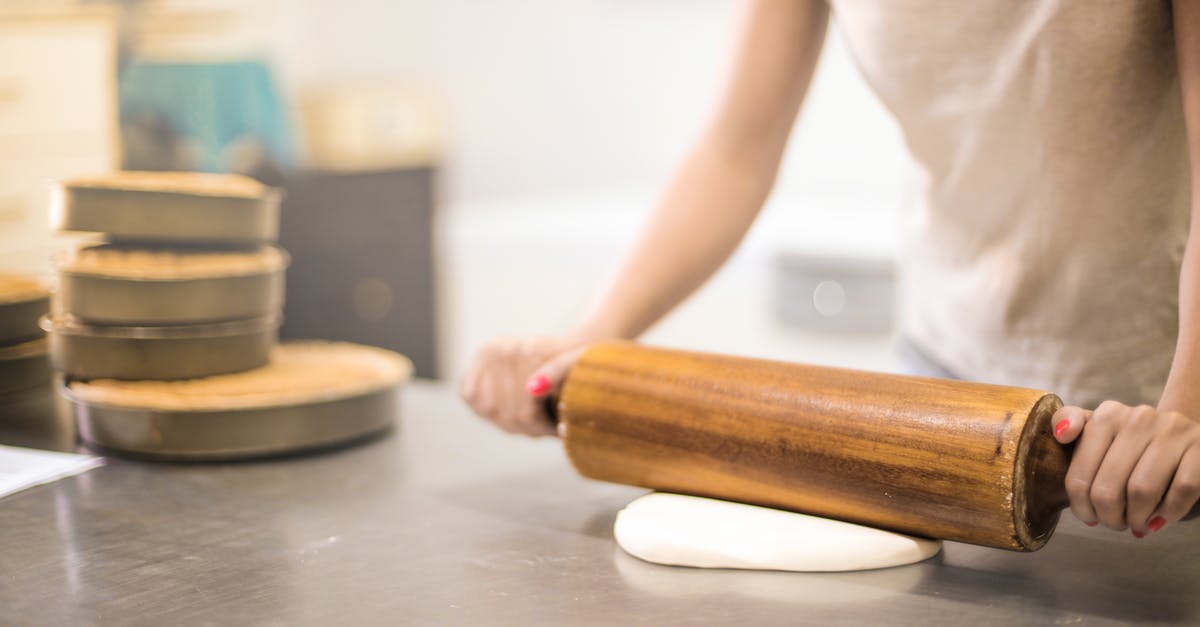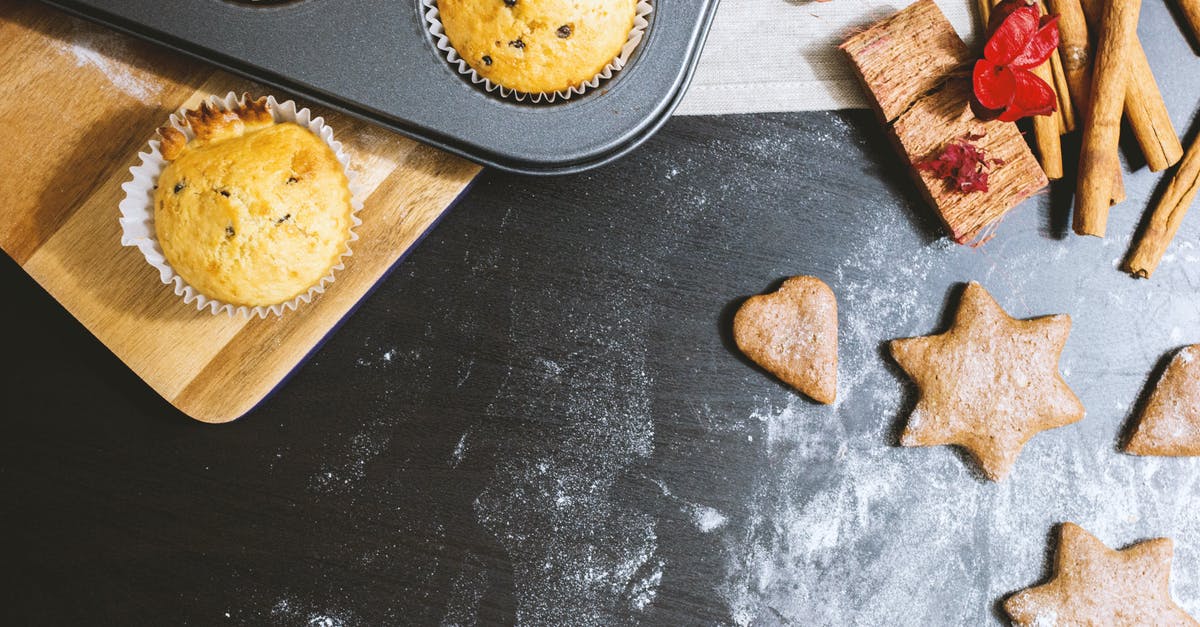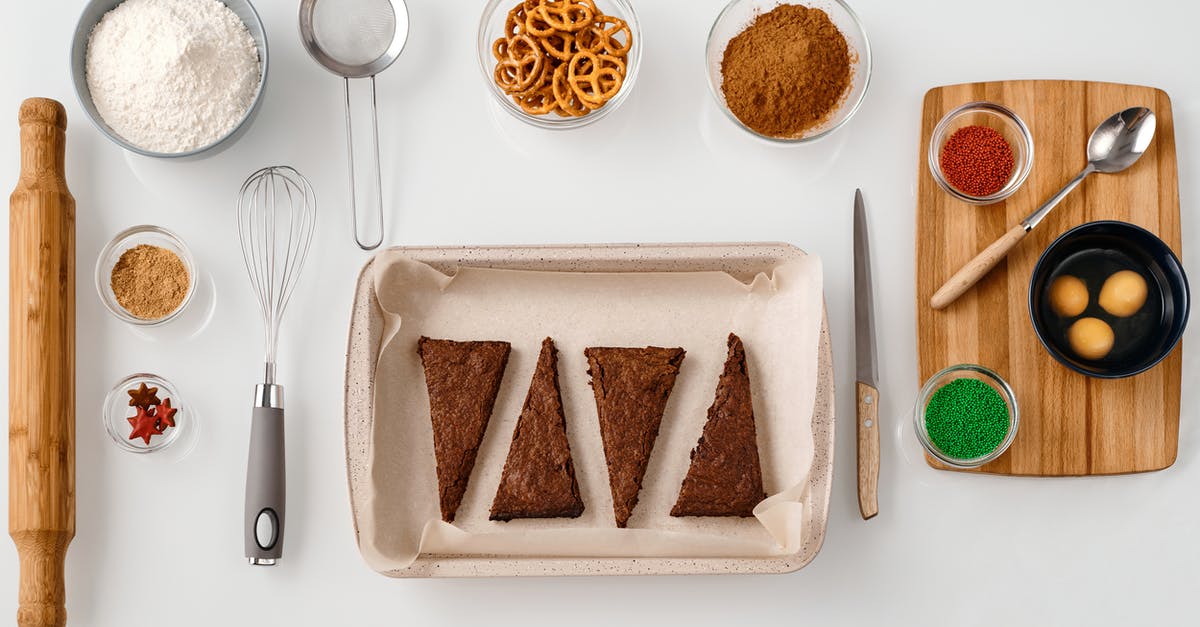cake baking problem (white lumps of flour)

I have a cake recipe called oil cake that has been in my family for a long time. It calls for flour and sugar and to make a well and add egg, buttermilk, cocoa, pinch of salt, cinnamon, and oil. Then add 1 cup of boiled water to which 2 tsps of baking soda have been added. Sometimes I mix it first and then add the water w/ b soda and sometimes I add it all together. My problem is sometimes I have white clumps in the batter and they are still there when the cake is done baking. I can't figure out what the problem is. Is the water too hot? Which is the correct way to add it, before I mix the rest of the ingredients or after? Help I love this cake but sometimes it comes out perfect and other times not. I am at a loss. thanks for the advice
Best Answer
How it's supposed to be done
The lump problem is straightforward: your mixing technique is failing.
When you are using a well, you have to sift the flour first. Then you add a little bit of the homogenous liquid. So, you don't pour oil, eggs, etc. into the well, but first get them all into another bowl (including the water), and mix them well, preferably with an electric mixer, until they are very homogenous. Ideally, the eggs will emulsify the oil a bit.
For the actual ingredients mixing, you now pour just a little bit of your eggy mixture into the well, maybe 50 ml. Then you take a spoon or other utensil and start stirring the egg mixture without touching the flour with the spoon. A little bit of flour from the walls of the well will stick to the liquid surface and start sinking in, thickening the liquid. Once it is noticeably thicker than the pure mixture, you add some more of the egg mixture to thin it back, then continue back and forth, thickening the batter with the flour then thinning it, until you are done.
When you feel more comfortable and know well how the flour and liquid acts, you can start carefully spreading some flour from the far side of the flour "volcano hill" (not the well edge) onto the liquid, to get it a bit quicker. But in general, it is a finely tuned skill which you have to learn from experience, by doing it slowly and with concentration. If you impatiently stir too much flour into the liquid, it forms the lumps you described.
A more sensible alternative
This is how to execute the recipe correctly. It is a good, but very long method for even mixing. But frankly, there is no need to use it. Nowadays we have electric mixers, which will mix the flour for you into the liquid ingredients without creating lumps. And we have scales, so we can weigh the ingredients. So the second advantage of the well method - you stop mixing the moment the batter has the right consistency (which is necessary when you cannot measure the flour, or don't have a written recipe and are playing it by feeling) - is also moot. If you don't want to spend half an hour mixing your cake batter by your grandma's way, just emulsify the liquid ingredients with the mixer, then slowly add the sifted flour with the mixer turned on on low speed, and stop the moment it's mixed in. That's it.
Water temperature and boiling
As for the water, I see no good reason to boil it from a food science point of view. All the explanations I can think of make it seem unnecessary.
- The recipe is so old, it comes from a time with bad water supply. The water was always boiled for safety and to precipitate scale, rust and other stuff present. Shouldn't be a concern today. (If your water is very hard, filter it instead).
- The eggs and oil are meant to emulsify, to give you a smoother mouthfeel in the cake. It is like making mayonnaise, and works best when the eggs are warm - but fails completely when you make them so hot that they curdle. 72 Celsius would be optimal, but anything between 60 and 83 Celsius should work. If your water is warmer than that, it will curdle your eggs, doing more damage than good. So, if you are pouring the water in just after boiling, stop doing it (although it doesn't cause the lumps you described, it causes cruder texture overall). The best thing would be to warm it to 80 Celsius using a thermometer, then pour it into the eggs, beat, then add the oil. If you don't have a thermometer, take it off the heat the moment you see the first tiny bubble forming on the bottom, then let it cool for a minute before pouring.
- The soda dissolves quicker in warm water. This is still not a reason to get it to a full boil - take it again to 80 Celisius, instead of boiling first and cooling it afterwards.
- The whole ingredients are too cold when coming directly from the fridge, and the hot water is supposed to correct that. But in fact, this won't work well. Temperature shocks are not good for cake ingredients, especially for eggs. You should use room temperature eggs and buttermilk instead.
Pictures about "cake baking problem (white lumps of flour)"



Quick Answer about "cake baking problem (white lumps of flour)"
The flour can form lumps if the mixture is too hot, but if the flour has been stored for a while it can also be a bit compacted, so it may help to sift the flour and bicarbonate of soda (baking soda) into the liquid mixture before whisking them in.How do you get rid of flour lumps in cake batter?
Like with cake batters, lumps can form if you don't sift the flour. If a recipe doesn't call for sifting the flour, just give a few whisks (use a wire whisk) in the bowl. Flour settles when it's stored so whisking aerates it. You can do this with the cr\xeape mix, too.What happens if there are lumps in cake batter?
Your eggs or milk are too cold! The blobs in the batter are pieces of butter. This butter breaks out of the batter when the fat gets too cold and seizes. It's important that all fat and dairy, including butter and eggs, should be brought to room temperature before you use them in batter.Why does my cake have white spots?
Sugary Tops or White Spots on CakesToo much sugar. Not enough liquid (to dissolve the sugar) Sugar too coarse (to be fully dissolved) Cakes standing too long before going in the oven.What happens if too much flour in cake?
If you put too much flour in, the wet ingredients will absorb the flour leaving your cake dry and crumbly. Your cake can also end up dry if you don't add enough butter or eggs. Make sure you follow the recipe correctly next time and always double check your oven temperature.Top 5 Cake Baking Mistakes! | Preppy Kitchen
More answers regarding cake baking problem (white lumps of flour)
Answer 2
The boiling water is actually an integral part of the recipe - the heat insures that the cocoa powder fully dissolves and contributes to a richer, more chocolate-y cake - and adding the baking soda to the water first will probably have more to do with enriching the color of the final baked cake than it has to do with leavening. It is NOT tied to sanitation issues. Please do not neglect this part in your process!
Also, you need to be a little careful about the order in which you add your ingredients - for instance, you can't just mix-up your eggs in the boiling water because that would cook the eggs - the eggs need to go into the batter when the batter is cool enough to prevent coagulation.
I assume that what you are making is a good old-fashioned chocolate cake using cocoa. Here's a link to a recipe from Hershey's - I know that you want to perfect your family recipe so I'm not trying to suggest you abandon your link to the past - I include it here because you might find the directions (and the order of operations) helpful if you apply them to your cake.
Sources: Stack Exchange - This article follows the attribution requirements of Stack Exchange and is licensed under CC BY-SA 3.0.
Images: RODC., Andrea Piacquadio, JÉSHOOTS, Nicole Michalou
